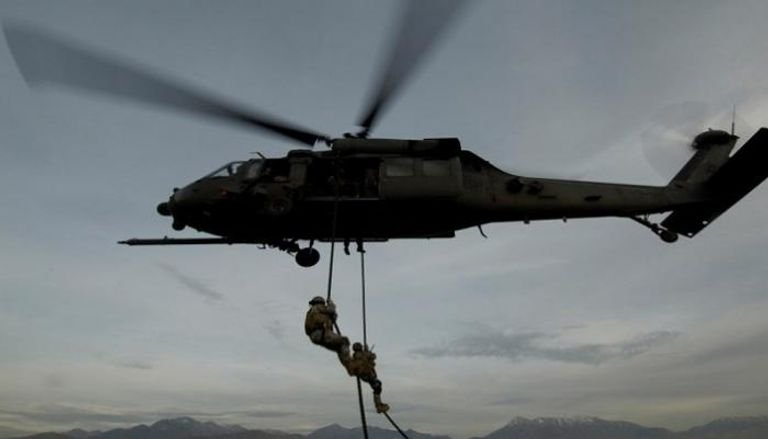Steven Sahiounie, journalist and political commentator
According to the Syrian state media, a US-led coalition has captured a senior member of the ISIS group in Atmeh, in the province of Idlib. The exact identity of the man has yet to be disclosed, but many believe it may be the ISIS supreme leader, Abu Hafs al-Hashimi al-Qurashi.
Qurashi was named the fifth and current caliph of the ISIS on August 3, 2023.
The pre-dawn raid included landing special commandos from helicopters in Atmeh, on the Turkish border. According to the UK-based Syrian Observatory of Human Rights, Qurashi was taken away, while a second Iraqi was killed.
The man captured was accompanied by a French-speaking woman, but whether she was taken by the Americans, or the Syrians, is not yet clear.
There were hundreds of foreign women, mainly Europeans, who flocked to Syria on a women who joined ISIS” أو “foreign female recruits, during the Syrian civil war. They became the ‘comfort-women’ of the terrorists fighting to over throw the government of Bashar al-Assad.
According to Syrian media, the Iraqi killed was Salah Noman, who had been hiding in Idlib with his wife and mother. He was a senior ISIS operative.
This marks the second raid in northern Syria by American troops since Assad was ousted in December. The government led by President Ahmed al-Sharaa, which replaced him, has pledged to prevent a resurgence of ISIS and is partnered with US-led coalition fighting terrorists.
Sharaa had fought with Al Qeada against the US in Iraq since 2003, then came to Syria where he led the Jibhat al-Nusra group, which was the Syrian branch of Al Qaeda. Finally, while headquartered in Idlib, he changed the group’s name to Hayat Tahrir al-Sham, and denounced Al Qaeda. He commanded a coalition of rebels groups which won the revolution, and now he is the President of Syria. He stresses that he is no longer a terrorist, and has dissolved his group.
In May, ISIS claimed responsibility for an attack on the Syrian army, marking the first such attack since the fall of Assad. They attack involved a bomb planted on an army vehicle.
ISIS view President al-Sharaa as illegitimate, and they view him personally as an ‘apostate’ and ‘traitor’.
ISIS was defeated in Iraq in 2017 and in Syria in 2019, but its terrorists continue to carry out attack in the region, and worldwide. The ideology of ISIS is basically the same as the Muslim Brotherhood and Al Qaeda.
In June, at least 25 people were killed in an attack on Mar Elias Church in Damascus, with dozens severely injured. Initially, the Syrian government blamed ISIS, but another terrorist group, Saraya Ansar al-Sunna, claimed responsibility.
Idlib is a small, insignificant province in Syria on the Turkish border. Prior to the Syrian civil war, which began in 2011, Idlib was best known for its olive trees, and the resulting olive oil production.
Once the uprising began, armed fighters known as ‘rebels’ took control of the Idlib province and it became a haven for armed terrorists, who over time splintered off into many separate branches, included thousands of foreign fighters.
The key to Idlib thriving as a haven for terrorist, was the porous border with Turkey. The Turkish government openly supported the rebels, as did the US-NATO war machine. In 2017, US President Trump cut off the US support to the rebels in Idlib.
In 2017, the Idlib province came under the control of the Syrian Salvation Government, with Sharaa, then called Julani, and his Tahrir al-Sham the dominant militia among others.
In February 2022, two dozen of the elite Delta Force American commandos descended from the skies over Idlib. They came to capture the ISIS leader, Abu Ibrahim al-Hashimi al-Qurayshi. he died in an explosion during the raid rather than be captured.
In a similar incident in 2019, also in Idlib, a special ops team killed the first leader of ISIS, Abu Bakr al-Baghdadi, on the order of Trump.
In a 2022 article penned for the media, Foreign Policy, the headline read, “Rebel-Held Syria Is the New Capital of Global Terrorism”.
The article stated, “Since 2015, the United States has killed scores of al Qaeda and Islamic leaders inside Idlib, often in drone strikes. The presence of high-profile Islamic State and al Qaeda leaders in the last rebel-held Syrian enclave has confirmed that Idlib has become the hideout of choice.”
To the large population of Latakia to the west, Idlib represents the past fight against the dictator Assad. But, Assad is gone, so why are the terrorists still there? Do they want a second revolution?
Now that we are almost nine-months post Assad, we are still seeing Idlib as a refuge for terrorists, although not always a safe-haven. One of the hardest parts of the transition of Syria, are the remnants of terrorists who have not given up the fight to create an Islamic State in Syria. The Sharaa government is challenged by various hot-spots in Syria which have a supply of arms and trained fighters, but without the willingness to transition to peace and prosperity.
Steven Sahiounie is a two-time award-winning journalist.



